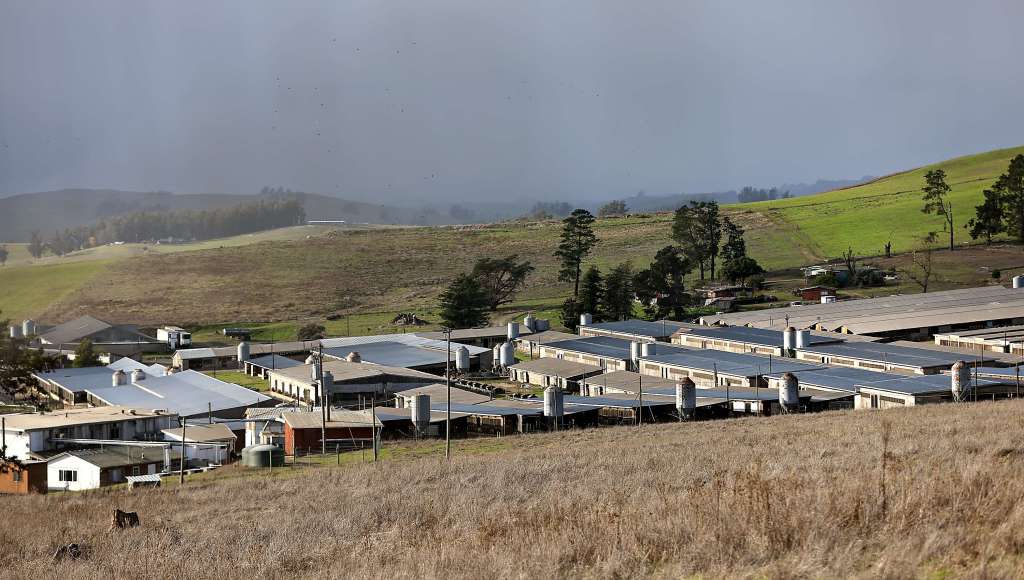HYDE PARK — President Donald Trump on Wednesday night posted on social media that he was instructing the “Department of War” to immediately start testing nuclear weapons, which hasn’t happened for over 30 years.
Just a few days before, Netflix dropped Kathryn Bigelow’s “A House of Dynamite,” which explores what happens when an errant, presumably nuclear missile is headed toward the United States.
You just can’t buy that kind of publicity; at this writing, the movie was No. 1 on Netflix.
[Warning: Mild spoilers for “A House of Dynamite” follow.]
In “A House of Dynamite,” the U.S. nuclear defense apparatus is caught off-guard by a single intercontinental ballistic missile, which is fired from an unknown point of origin and is headed toward Chicago.
No one knows who started the attack; all defensive countermeasures have failed. As Bigelow’s film flits from one perspective to another, it becomes clear that Chicago will be utterly destroyed, and government officials (a cast including Rebecca Ferguson, Jared Harris, Gabriel Basso and Chicago’s own Tracy Letts) all the way up to the president (Idris Elba) have to figure out where, how and even whether to retaliate.
What Would Happen
According to NUKEMAP, a platform created by Alex Wellerstein, a nuclear historian and associate professor of science and technology studies at the Stevens Institute of Technology in New Jersey, if a 150-kiloton nuclear warhead were to have a surface detonation in the heart of Downtown Chicago, the fireball would span just over a half mile, instantly vaporizing anything within it.
From there, heavy blast damage would hit a wider circle from the lake to River North at about 500 miles per hour and 20 psi, demolishing concrete buildings and killing everyone. A lethal ionizing radiation dose of 500 rems would spread to the South Loop, the Near North Side and the West Loop. Blast damage and thermal radiation would extend another 4 miles, giving people third-degree burns and collapsing buildings at its outermost points — up through DePaul and Bridgeport.
The estimated fatality count is 355,560, even before considering the effects of nuclear fallout and any additional retaliation in the wake of a nuclear attack.
Wellerstein launched the site in 2012 to help the public visualize the impact of various nuclear weapon yields worldwide.
These are the kind of calculations that nuclear defense and disarmament experts have to make every day, but they’re also the kind of scenarios no one can truly prepare for, no matter how much money world governments pour into countermeasures and missile defense.
In the movie, a Federal Emergency Management Agency employee (played by Moses Ingram) estimates the fatality loss to the Chicago area would be “10 million primary, with another 10 percent downwind.”

‘Well-Informed Guessing’
The prospect of a nuclear bomb hitting a major American city is a terrifying one, but one that Alexandra Bell, president and CEO of Bulletin of the Atomic Scientists, hopes the film will make people consider.
The Bulletin, which is housed in the Keller Center on the University of Chicago campus in Hyde Park, was founded by the scientists and engineers of the Manhattan Project in the wake of the atomic bombings of Hiroshima and Nagasaki. It has been alerting humanity to the danger of nuclear catastrophe since December 1945, most notably via its famous Doomsday Clock, which is currently set at 89 seconds to midnight.
Having seen “House of Dynamite” ahead of its Netflix premiere, Bell told Block Club she was impressed by the film’s attention to detail and the “clear desire” to get the details of such procedures right. It’s a tough balance to strike, as even nuclear experts are only working off guesses in their own research and scholarship.
“It’s good guessing, well-informed guessing, but it’s guessing,” she said.

One such detail was its portrayal of the sheer number of governmental agencies involved — the State Department, United States Strategic Command and FEMA — in responding to such nuclear threats.
“The higher up in government levels you go, the fewer people have thought about this,” Bell said.
The threat of a single ballistic missile firing from an unknown point of origin is unlikely but not unfathomable, Bell said.
“We’re watching all the time,” she said, and it’s most likely that an actual aggressor would send more than one missile, and/or U.S. radar would be able to pick up where it came from. The film handwaves this element by claiming the initial radar failed in some way. But Bell thinks a more likely danger is AI-enabled attacks on nuclear command and control systems that could spoof an attack, goading the United States into a false response.

‘Trying To Hit A Bullet With A Bullet’
In the film, STRATCOM fires two ground-based interceptor missiles in an attempt to shoot down the rogue rocket. One character explains to another that the success rate for these is around “61 percent,” to which another character laments that billions of dollars of infrastructure have been reduced to a “coin toss.”
Bell actually thinks that statistic is overestimated, and the likelihood of those countermeasures succeeding is much lower than people think.
“I’ve been up to [Fort] Greeley [where the film begins, at the Alaska-based U.S. Army launch site for anti-ballistic missiles] and fully respect everything the military has invested to try to make this system work,” Bell said. “But as the movie represents, you’re trying to hit a bullet with a bullet.”
These systems haven’t had to be tested against a real-world scenario, and “there was a time we didn’t even test at night because we weren’t sure how the systems would deal with that,” she said.
There are one or two minor lapses in accuracy that Bell could point to, such as leaving prominent names and positions out of the overall crisis management conversation in the film.
“As a former employee of the State Department, I was surprised to find the Secretary of State did not seem to exist in this universe,” she said.
But Bell also appreciated the human element screenwriter Noah Oppenheim brought to the characters, as hardened government officials suddenly worry about their loved ones in the middle of an impending nuclear apocalypse.
“The nuclear community is particularly good at using very emotionless, clinical language to talk about these threats,” Bell said. “But these are humans who would have to respond and think about their loved ones.”

Why did the film pick Chicago as the target? In an interview with The Bulletin, Oppenheim explains that he selected the city to “convey … the universality of the danger” nukes present to U.S. cities.
“The city of Chicago, right in the middle of America’s heartland — I think it just represents the fact that nobody is safe from this threat and from these weapons,” he said.
If anything, Bell hopes the film gets Chicagoans — and Americans as a whole — more invested in the existential issue of nuclear disarmament, she said. While the end of the Cold War led to the destruction of nearly 57,000 nuclear weapons, the world still has a “simply ridiculously dangerous” number of 13,000 accounted for among Earth’s nuclear powers.
“And we’re going back up,” Bell said, as China builds up its supply rapidly, and the United States is making decisions about potentially expanding its nuclear arsenal for the first time in half a century.
As Bell and “House of Dynamite” illustrate, it’s presumptuous to rely on the theater of the American nuclear defense apparatus to protect Chicago, or anywhere else in the United States, from atomic threats. Bell said the real power is in the slow, painful work of international diplomacy and nuclear disarmament, which only happens with broad public pressure.
“People have agency, and we need people back in the conversation,” Bell said.
To help people gain the understanding and language to talk to their elected officials about this crucial topic, Bell will speak at a Bulletin-sponsored livestreamed panel at 11:30 a.m. Nov. 6, titled Experts React: Netflix’s “A House of Dynamite,” alongside NUKEMAP creator Wellerstein and fellow Bulletin members Jill Hruby and Major General Robert H. Latiff. You can sign up for this free event here.
Listen to the Block Club Chicago podcast:
First Appeared on
Source link













